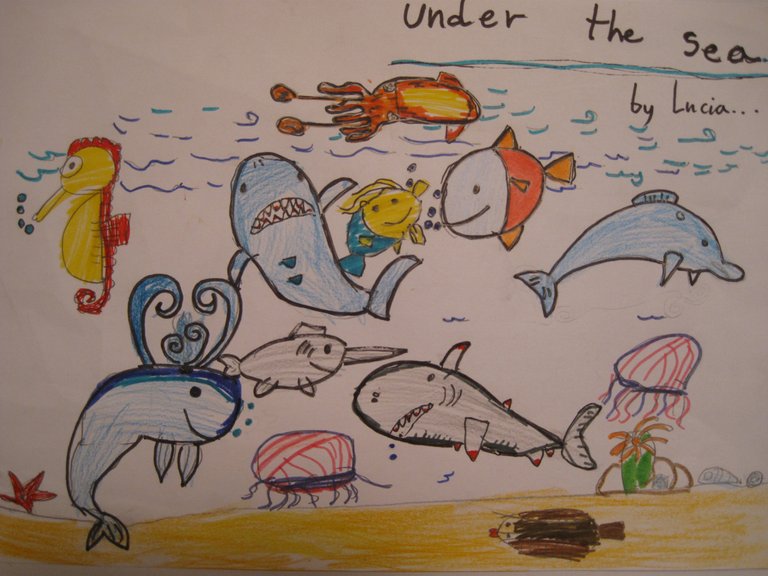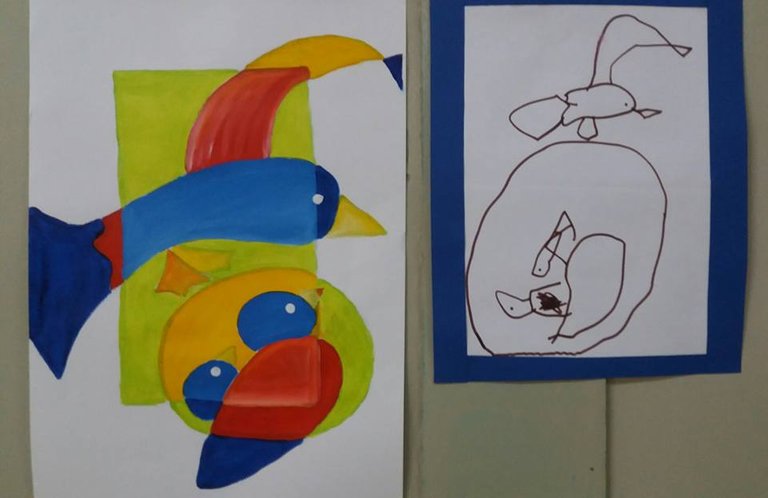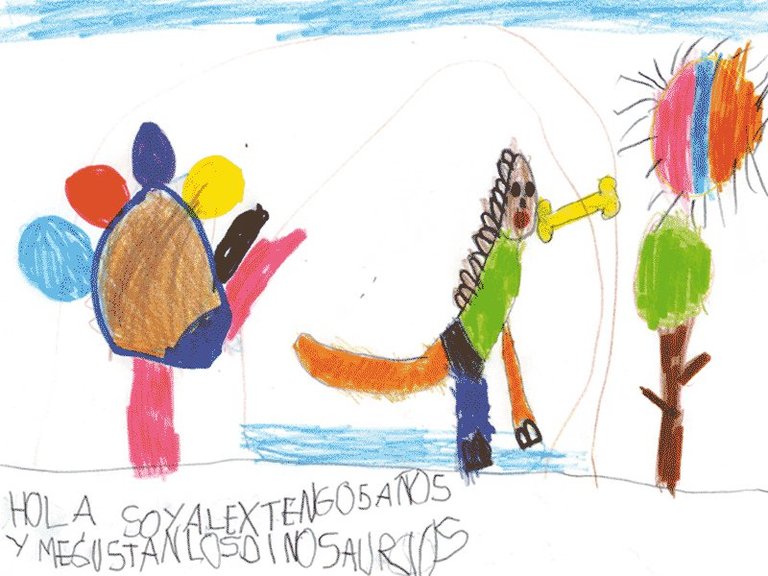All children, since they can hold a pencil in their hands, make strokes. Strictly speaking, the drawing is something like the big brother of the doodle, being less strict, between 2 and 5 years also occur graphical expressions that can be identified as is name. The specialists indicate the following stages of the drawing, although not all are according to the exact ages in which they occur:
Stage scribbling: It occurs between 18 months and 5 years, with a continuous progress ranging from simple marks on paper to drawing with representative capacity, which appears around 4 years.
Stage of the scheme: It occurs between 5 and 9 years. In it, boys and girls go on to represent the human figure in the same way, as if following a scheme. Likewise, the objects appear aligned in a single level in a graphic plane.
Stage of transition: It occurs between 9 and 12 years. A profusion of details appears, both in the human figure and the environment, and a concern for the perspective in search of realism arises.
Stage of the decision. It occurs between 12 and 14 years, and is characterized primarily because the drawing is no longer fully spontaneous to be planned and taken care of, each time in more detail.
What does drawing mean for children?
Before an artistic manifestation, for children, drawing is a means of expression of thought, it is a personal communicative act. It is from 2 years that children feel that the stripes and circles they draw have a meaning, within the framework of the second phase of the doodle. However, only at 4 years, and in the third phase of the doodle, his strokes become more representative, always on elements of their family environment or on aspects that, in one way or another, arouse their interest. As the children grow and their language develops, their gross and fine motor skills, apart from the necessary sociability, the strokes of their drawings improve and take the correct forms and what they want to express.

Should be taught to draw?
It is essential to consider that the inner world of each child will be the one that gives the guidelines to make his drawings, insofar as these are, as already mentioned, communicative acts. As with any great painting teacher who resorts to transgressive forms, boys and girls also create theirs. Beware, then, with questioning your drawings as badly done. Thus, in a first instance, between 2 and 4 years, children should be allowed to make their drawings with complete freedom. This is necessary because correcting them, with or without caution, will bring about the first great frustrations. However, in a second instance, among these same ages, it is convenient to put abundant graphic materials within reach of the small ones, through which they can internalize the complexities of the world and its representation. But it should not be forgotten that these materials will only serve as reference and that they should be used for their training and for a playful learning, never as an obligation or, much less, as an imposition. The important thing is that the graphic manifestations of the children preserve as much as possible their freedom and spontaneity, and that their execution and that their execution never becomes a source of tension, since in a situation the expression of the self is inhibited.

Later, when children reach the age of 5, it is already possible to give them simple indications so that they can carry out certain drawings or procedures, and it is expected that they know how to understand and respond to what is asked of them in each case.
What it contributes
Drawing is one of the activities that benefits the most for the integral development of boys and girls. It is important to consider, at least, the following aspects:
- It favors the achievement of a greater fine psychomotor domain, especially the more it is practiced.
- Feel the bases to achieve writing and reading, because it allows structuring the world and ideas about it.
- It serves as a communicative channel between the internal world of children and adults.
- Builds and consolidates self-confidence, insofar as it allows them to know they are capable of doing something.
- It represents an emotional discharge therapy, to the extent that joys, fears and anguish.
- Grow natural creativity thanks to that it becomes a free fantasy space.
- Delineates the personality, it is also an activity of inner exploration and, as a result, it provides emotional maturity.
Children use the drawings to express their emotions even without knowing how to express it verbally, so we must not forget the importance they have for them, the effort and effort of each drawing are valuable, as parents we must always show interest and pride in each achievement.
Are all children able to draw? Should they be allowed to draw what they like or should, rather, provide them with models? What benefits does the act of drawing bring? Do your creations mean something or are they simple strokes made at random without any communicative intention?
